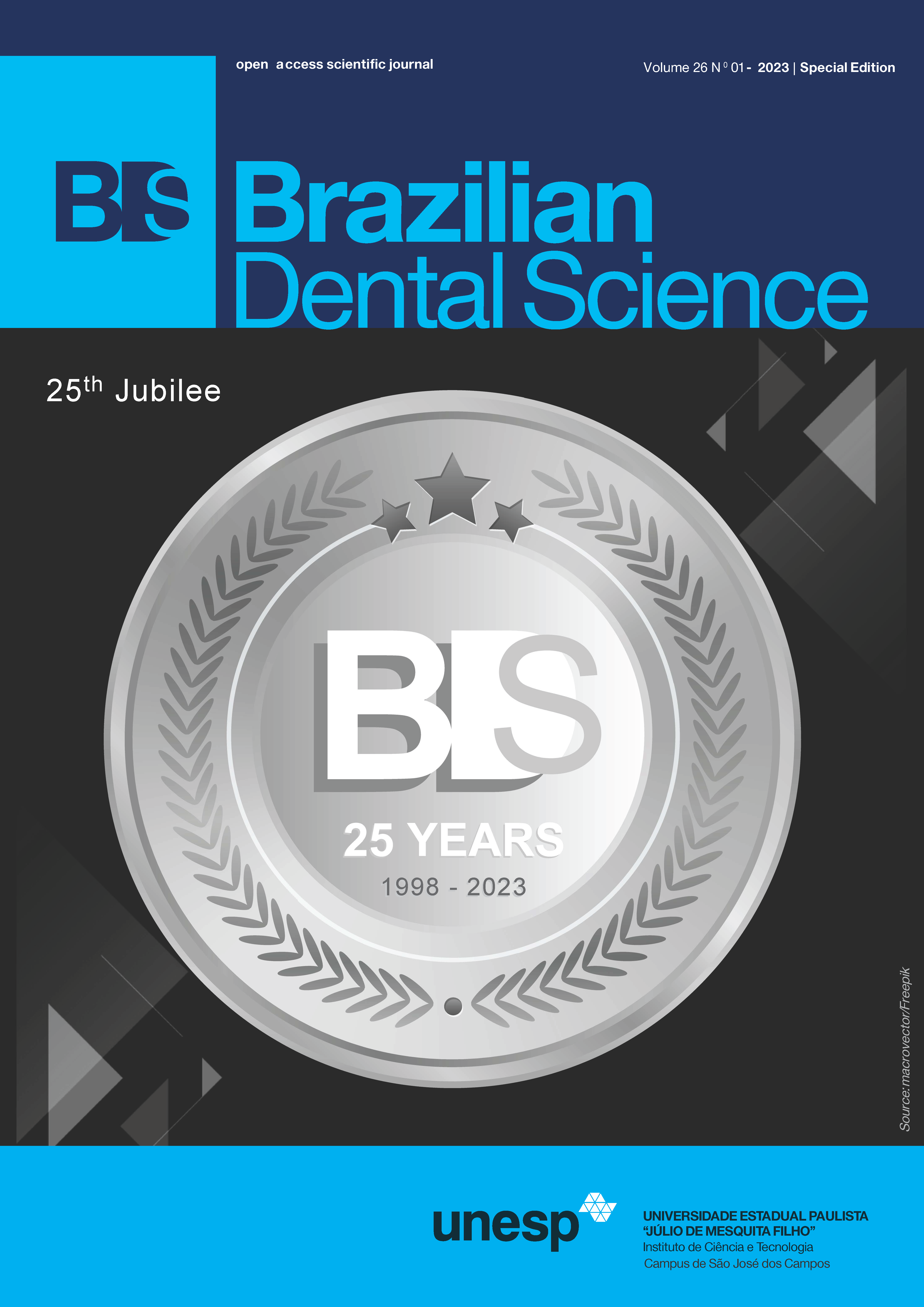Mechanical behavior of different machinable ceramic crowns using vertical and horizontal preparations: an in-vitro study
DOI:
https://doi.org/10.4322/bds.2023.e3706Resumo
Objective: the aim of this study was to compare the mechanical behavior of different ceramics when used in thin
vertical preparations versus traditional horizontal preparation. Material and Methods: two stainless-steel dies
were milled to simulate a minimally invasive vertical preparation (VP) and a traditional horizontal preparation
(HP) for an all-ceramic crown of a maxillary first premolar. The stainless-steel dies were duplicated using epoxy
resin. Eighty monolithic crowns were milled and divided into 2 groups according to preparation design. Each
design group was subdivided into 4 sub-groups according to material (n=10): IPS e.max CAD (lithium disilicate),
Bruxzir shaded zirconia (full contour zirconia), CeraSmart (resin nanoceramic) and CEREC Tessera (advanced
lithium disilicate). The crowns were cemented on their relevant epoxy resin dies using self-adhesive resin cement.
All specimens were subjected to 15,000 thermocycles and then loaded to fracture in a universal testing machine.
Data were analyzed using two-way ANOVA and Tukey pair wise comparison test. Results: the fracture resistance
mean values of the VP (1344 + 118 N) was significantly lower than the HP design (1646 + 191 N). Ceramic
crowns made of full contour zirconia had higher fracture resistance mean values (2842 + 380 N) than advanced
lithium disilicate (1272 + 125 N) followed by lithium disilicate crowns (983 + 52 N) and resin nanoceramic
(882 + 61 N). Conclusion: both vertical and horizontal preparations, regardless the different ceramic materials,
showed clinically acceptable fracture resistance values.
KEYWORDS
Dental crown; Prosthodontics; Zirconia; Lithium disilicate; Hybrid ceramics.
Downloads
Downloads
Publicado
Versões
- 2023-01-11 (2)
- 2023-01-11 (1)
Como Citar
Edição
Seção
Licença
TRANSFERÊNCIA DE DIREITOS AUTORAIS E DECLARAÇÃO DE RESPONSABILIDADE
Toda a propriedade de direitos autorais do artigo "____________________________________________________________________" é transferido do autor(es) para a CIÊNCIA ODONTOLÓGICA BRASILEIRA, no caso do trabalho ser publicado. O artigo não foi publicado em outro lugar e não foi submetido simultaneamente para publicação em outra revista.
Vimos por meio deste, atestar que trabalho é original e não apresenta dados manipulados, fraude ou plágio. Fizemos contribuição científica significativa para o estudo e estamos cientes dos dados apresentados e de acordo com a versão final do artigo. Assumimos total responsabilidade pelos aspectos éticos do estudo.
Este texto deve ser impresso e assinado por todos os autores. A versão digitalizada deverá ser apresentada como arquivo suplementar durante o processo de submissão.





























